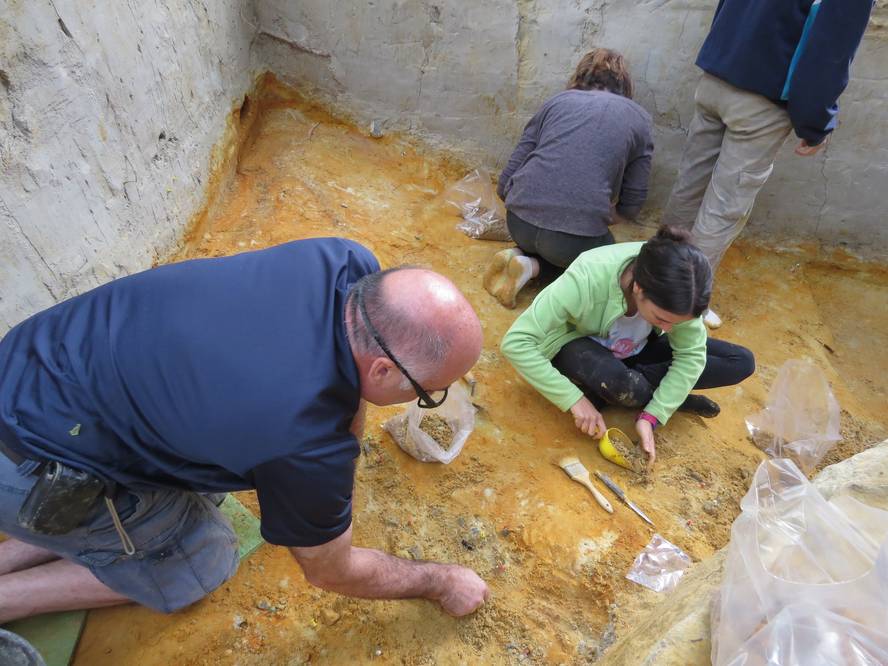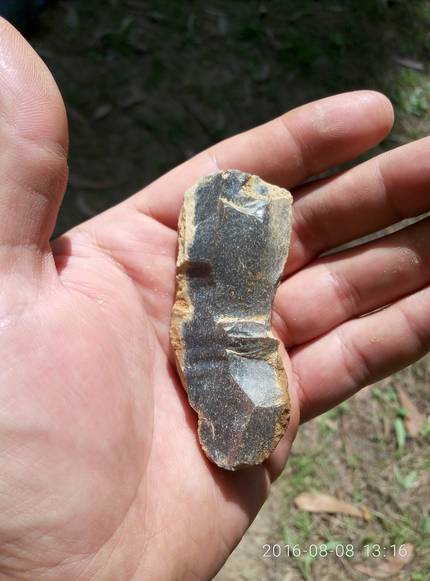Spot portrait of the loss of Neanderthals in Aranbalza
Archaeologists continue to investigate the loss of Neanderthals. They know that this process, which took place 50,000-40,000 years ago, was complex and caused by many factors, but it is not easy to get down from the general to the detailed, finding evidence of a concrete moment of the process. But this is what the team led by Joseba Ríos Garaizar has achieved at the Aranbaltza II site in Barrika (Bizkaia).
Aranbaltza II is unique since most of the paleolithic deposits in the Cantabrian are in caves and Aranbaltza is outdoors. His research is therefore of great interest, as it provides other information on the life of Neanderthals. Aranbaltza II also has tools of another culture, of Chaplain culture, alien to the traditional Paleolithic Middle (Musteriano) garden. Well, the chronological study carried out by researchers reveals that there is at least a thousand-year cut between the two cultures.
The results of the research have been published in the journal PLOS ONE and offer an explanation of technological change, proposing that the neandalism groups that were in Aranbalza disappeared and then occupied the teams from Aquitaine. Aranbaltza’s research therefore complements the vision of Neanderthals’ loss.
According to Ríos, it is known that in the Middle Paleolithic there are Neanderthals from different cultures and that, in different times, there are separate groups in certain places. However, it is difficult to differentiate industries, as they are very similar to each other. In Aranbaltza II the difference is very remarkable. “It is very clear that the previous technology has no continuity and that until the arrival of the instruments of the Chapteronian culture it took at least a thousand years. Therefore, the Neanderthals who were before disappeared or left, and those who then lived there came from another place with which they brought another culture.”
Weaknesses in the social network
Thus, in the context of the loss of Neanderthals, Aranbalza II, in the words of Ríos, offers a “point photograph”: “In the loss of Neanderthals there were many factors: climatic, demographic, diseases, cultures, the arrival of modern man… In Aranbal we have had the opportunity to analyze part of this process. We have seen that they have demographic problems and that gaps are created in the network that form the different groups. Thus, another group of foreigners covers, in a short space, one of the gaps. But you need a large population and a dense network to exchange genes, knowledge and materials. If they form in the vacuum in the network and the groups are isolated, the failure comes.”
A clear example of this is what happened at the Aranbaltza II site, and hence the importance of this investigation. Likewise, Ríos believes that his work can be used to investigate other similar fields from this perspective and to better understand the loss of Neanderthals.







